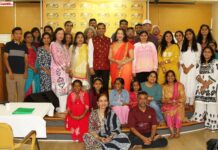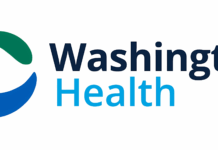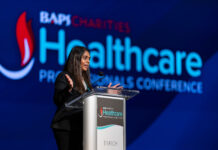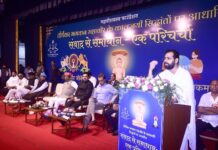Vidya Sethuraman
India Post News Service
The US is facing a simultaneous rise in Covid-19, flu, and Respiratory Syncytial Virus – RSV – cases — what some medical experts call a “tripledemic.” The surge of respiratory illnesses threatens to burden already-overstretched healthcare systems, with possible lapses in care for vulnerable communities. The Centers for Disease Control and Prevention reported 29,000 Covid hospitalizations in the week ending Dec. 23. The new JN.1 subvariant accounts for nearly half of new Covid infections. The US is also facing a surge in RSV cases, a respiratory illness without a cure, largely seen in infants and older adults. And, in just the last quarter of 2023, there have been 14 million cases of flu with 13,000 deaths, according to CDC estimates.
Dr. Benjamin Neuman, Chief Virologist of the Global Health Research Complex at Texas A&M University clarified that the risk of hospitalization and death increases regardless of which variant of Covid-19 attacks defense systems. He mentioned that about 50% of current COVID-19 cases are caused by the JN.1 strain, and its particularity makes the current COVID-19 vaccine almost useless against it. But the currently circulating JN.1 coronavirus is very special. It escaped from human herd immunity and the COVID-19 vaccine, branched off from the old Omicron virus, mutated, and dominated the current COVID-19 epidemic. This is rare in the history of viruses. Because under normal circumstances, viruses mutate vertically, rather than re-differentiating new viruses from previous viruses.
Dr. Manisha Newaskar, Pediatric Pulmonologist, Stanford Children’s Health said RSV season is October through March in the USA. Flu, RSV and COVID-19 all share similar cold-like symptoms: nasal congestion, headaches, fatigue plus muscle aches and fever. But it’s important to get tested to determine which virus, or viruses, might be causing symptoms. She said that RSV is more common in children and people over 60 years old, and people with respiratory diseases should also pay attention. There is currently no specific medicine for RSV. For children, the only way to deal with it is by lowering body temperature.
José Pérez, a family physician and Chief Medical officer at Family Health Centers of South Central Los Angeles, explained that there are hundreds of different viruses that can cause respiratory infections, with symptoms including nose, throat, eyes, fever and muscle aches. These symptoms may lead to bronchitis, muscle pain and pneumonia. “This is more common in the winter when people spend more time indoors because of the weather and celebrations.” Currently, in Los Angeles County, the RSV epidemic has cooled down, the COVID-19 epidemic has tended to ease, and influenza has been on the rise. Dr. Perez recommends staying at least six feet away from people, wearing a mask, washing your hands frequently, staying home if you don’t feel well, and getting vaccinated.
Also Read: The alarming surge of pediatric RSV — How can we keep our young children safe?







